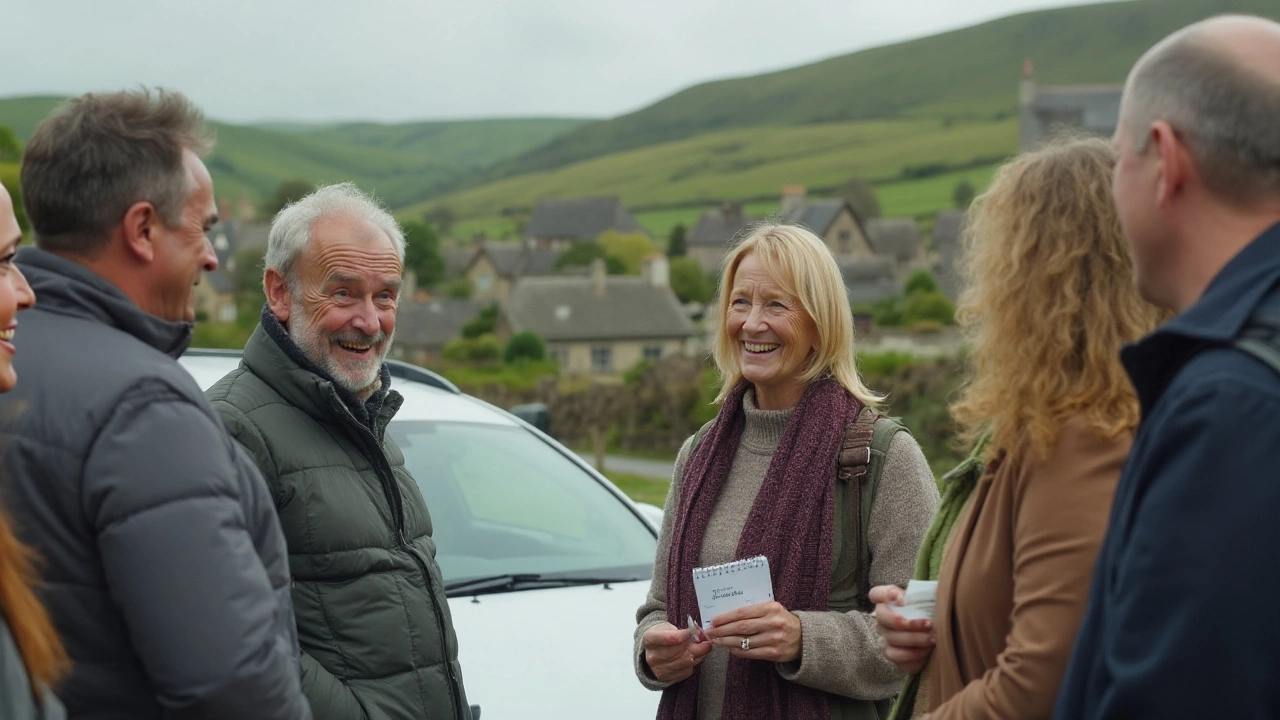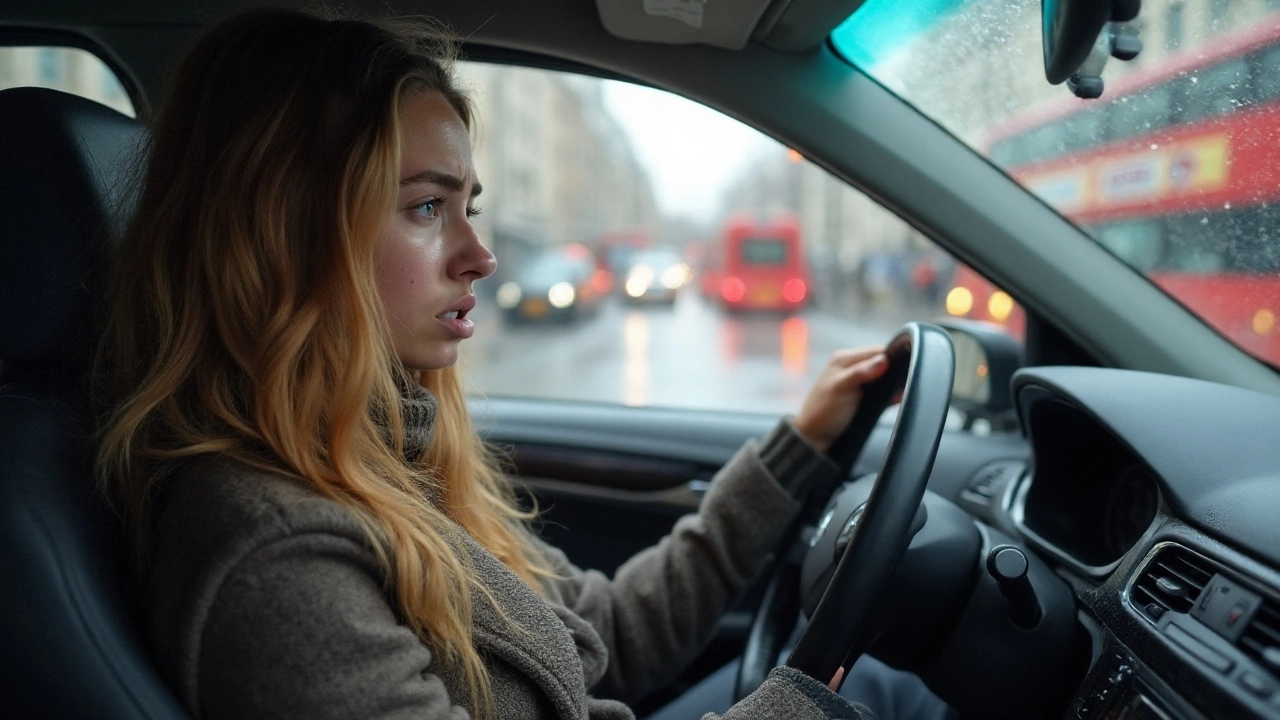Ever grabbed the wheel, heart pumping harder than your engine, palms sweaty, and stomach twisted in a knot? You're not alone if the idea of driving fills you with dread. In the UK, research shows that around one in seven drivers admit they've felt serious anxiety about driving at some point, and that's just the ones being honest. So many people—experienced or brand new—get struck by a wave of panic that makes the road feel like a battleground. The good news? It's possible to tame that fear, and it isn't as impossible as your anxious brain might tell you.
What Triggers Driving Anxiety?
You've probably wondered why you get nervous to drive when your mates and family seem to do it without blinking. Driving anxiety can hit anyone, old or young, new drivers or people who’ve been on the road for years. Sometimes, it comes out of nowhere, making it even more frustrating. Almost always, there are some common triggers behind it.
Let’s start with bad experiences—things like a near miss, being stuck in a crash, or even seeing a scary incident on the news. Your brain remembers trauma and uses it as an annoying “safety” mechanism. You might not even realise how much these moments have seeped into your subconscious until you sit behind the wheel again, feeling that cold dread creeping in. Then there’s the pressure to be perfect. Our culture’s obsession with ‘driving right’ and not making mistakes can crank up your anxiety, especially if you’ve had a critical instructor or harsh feedback from friends or family.
City driving cranks things up a notch. Heavy traffic, bikes squeezing past, pedestrians stepping out from nowhere, roadworks that pop up overnight—it’s chaos. Toss in bad weather, narrow roads, and confusing roundabouts, and it’s no wonder your nerves get frazzled. Driving at night or on unfamiliar motorways can leave anyone rattled, especially when you worry about breaking down or getting lost. You may also worry about judgement—other drivers getting impatient, honking their horns, or a passenger sighing at every mistake.
Interestingly, the NHS highlights that driving phobia (also known as vehophobia) can sometimes pop up with no direct cause other than a build-up of general stress or anxiety. It's the perfect storm: a mix of your personality, past experiences, and sometimes, just plain biology. If you have an anxiety disorder, you're more likely to have a tough time with driving. So, if you freeze when you see a motorway entry sign or break out in a sweat just thinking about driving at night, know you're not the only one wrestling with these nerves.
| Common Triggers | How Often It Happens (%) |
|---|---|
| Bad weather (fog, rain, ice) | 53 |
| Heavy traffic and congestion | 46 |
| High-speed roads or motorways | 39 |
| Driving alone | 32 |
| Night driving | 28 |
Easy Tips for Calming Driving Nerves
Sure, you can’t snap your fingers and erase your fear, but you can do loads to make it manageable. One of the most effective ways—a trick recommended by therapists and driving instructors alike—is slow exposure. You don’t need to barrel straight onto the motorway. Start by just sitting in the car with the engine off, then with it on, feeling comfortable in your seat and with the controls. Once that feels boring, try rolling through a quiet car park, then gradually move to a quiet street. No rush. The more you repeat these mini-sessions, the less scary it feels—your brain learns that nothing bad happens.
Breathing makes a world of difference. Most nervous drivers breathe too fast or shallow, which makes things worse. Spend a minute before you start driving to do deep belly breathing—inhaling slowly through your nose, then exhaling through your mouth. During a tricky drive, try box breathing (inhale for four seconds, hold for four, exhale for four, hold for four). It's amazing how quickly your body calms down.
Music and podcasts help more than you’d think. A chilled playlist or a funny podcast can break the emotion focus and keep you grounded. Choose calm tunes—no heavy rock mashups—especially when you’re just getting your confidence back. If music gets distracting, try listening for sounds inside the car—engine, indicators, tyres on tarmac—which can be oddly soothing once you start picking them out.
Stick to your strengths. If you hate city driving, start practising short routes in quiet neighborhoods. Build familiarity there first. Add challenges bit by bit—maybe one new roundabout at a time, or one longer stretch. There’s no shame in setting your own pace. The rule here is simple: small steps are still steps forward.
Tech can help, too. If your car has parking sensors, sat-nav, or lane assist, use them. They’re just tools—not cheats. Some navigation apps let you set “avoid motorways” or “least traffic” routes, which can lower your stress. Plenty of driving schools now offer refresher courses for nervous drivers, focusing on whatever freaks you out, be it parking or overtaking. These aren’t just for beginners—loads of experienced drivers go back to polish their skills and rebuild lost confidence.

Changing Your Mindset Around Driving
This might sound all woo-woo, but most of driving anxiety lives in your head. Have you ever noticed how your mind invents disaster scenarios before you’ve even left your driveway? That’s your brain’s “catastrophic thinking” in action. To cut it down, start by acknowledging your thoughts, but don’t blindly believe them. Instead, ask simple questions: Is there real evidence that I’ll mess this up? Have there been times I’ve driven just fine?
Try a technique called ‘thought challenging.’ When your thoughts shout, “You’ll cause an accident if you drive on the ring road,” write it down. Next to that, write out more balanced thoughts: “I have driven on that road before, and nothing bad happened. I know the route.” Over time, this practice helps retrain how your brain sees driving barriers. It’s not about pretending everything is perfect, but about not letting your worries have the last word.
Another mindset shift that works wonders is ditching perfection. The best drivers out there make mistakes—they take wrong turns, stall at lights, miss signs. Normalising these things protects you from the shame spiral that can make driving even scarier. Many advanced drivers say the secret to confidence isn’t about being flawless, but about bouncing back quickly when things go sideways. Focus less on “never messing up” and more on “recovering and moving on.”
There’s science behind all of this. Cognitive-behavioural therapy (CBT), which plenty of clinics use for driving anxiety, is proven to cut panic, rumination, and avoidance. Even if you’re not into official therapy, you can use the same tools. Journaling after drives—scribbling what worked, what freaked you out, and how you handled it—builds a record of progress and gives you clear wins to look back on. That sense of accomplishment fuels more confidence next time you’re itching to back out of a drive.
Building Real-World Experience
You can read every driving tip in the world, but nothing replaces actual experience. The more you drive, the less time your worries have to grow into monsters. Set up a routine—drive the same short route daily or every other day, even just to the local shop. When you’re ready, add a little challenge: new times of day, slightly busier roads, or a short stint in light rain. Don’t ratchet up the pressure by comparing yourself to friends who drive hours every week—focus on your own pace and progress.
It helps to draft a driving buddy. Maybe that’s a mate, sibling, or calm family member willing to sit beside you, encourage you, and give you gentle feedback when you need it. Avoid taking out someone who nags, criticises, or likes to show off—their tension makes your own nerves skyrocket. Set clear boundaries—tell them you just want company, not directions or critique. You can even agree on a non-verbal signal if you feel overwhelmed and need to pull over or turn around.
Practice doesn’t just mean clocking road miles—it means building specific skills, too. Struggling with parallel parking or roundabouts? Find a quiet street or empty car park and practice at your own speed. Many instructors say tackling one skill at a time is far more effective than trying to master everything at once. And it’s not just about the car—learn to read road signs, predict the flow of traffic, understand when to yield or go. Gradually, these details become second nature, freeing up energy to actually enjoy the journey.
Here's a data nugget: RoSPA (Royal Society for the Prevention of Accidents) found that new drivers who clock at least 40 hours of real-world practice are twice as likely to feel confident and safe on the road compared to those with less experience. So even if you aren’t new to driving, those extra hours can help your nerves settle. To boost your confidence, try setting simple driving goals—one new skill or road each week. Track the wins, no matter how small—they add up fast.

When Fear Persists: Getting Pro Help
If your fear of driving stubbornly refuses to budge, even after all the small steps, there’s no shame in calling in reinforcements. Loads of people work with specialist driving instructors who have experience helping nervous drivers. They know how to pace sessions, break things down, and create a zero-pressure environment, so you can build confidence without any fear of judgement.
Counsellors and therapists (especially those trained in CBT) work wonders here. If you notice anxiety bleeding into other areas of your life or panic attacks cropping up often, this can mean your driving fear is part of a bigger anxiety pattern. Talking therapies can untangle those roots and give you practical tools, not just pep-talks. If social situations make you anxious, group workshops for nervous drivers—sometimes called ‘driver confidence courses’—let you meet others in the same boat. That alone slashes shame and isolation, and you get to swap tips with people who get it.
Some drivers find hypnotherapy or mindfulness sessions bring extra relief, especially if your fear has a clear trigger (like an old crash). While these might sound a little “out there,” plenty of folks report real results, sometimes after just a few appointments. The key is to keep an open mind and try what appeals—there are more tools now than ever before. If panic is making you unsafe or causing blackouts or flashbacks, get a checkup with your GP. Sometimes, physical health conditions (like low blood sugar or heart stuff) can mimic anxiety, and you’ll want to rule them out just to be safe.
Remember, millions have felt what you’re feeling and come out the other side. Don’t buy into the myth that ‘real drivers’ never get scared. Put your comfort and progress first, not other people’s opinions. Step by step, you’ll go from nervous passenger to confident road-tripper—one chilled drive at a time.

